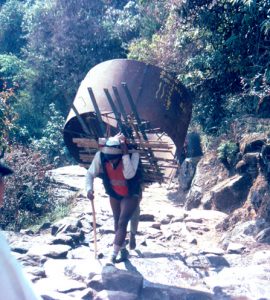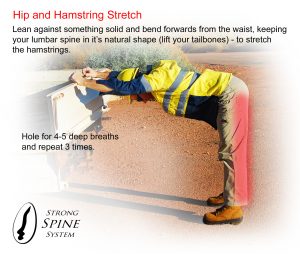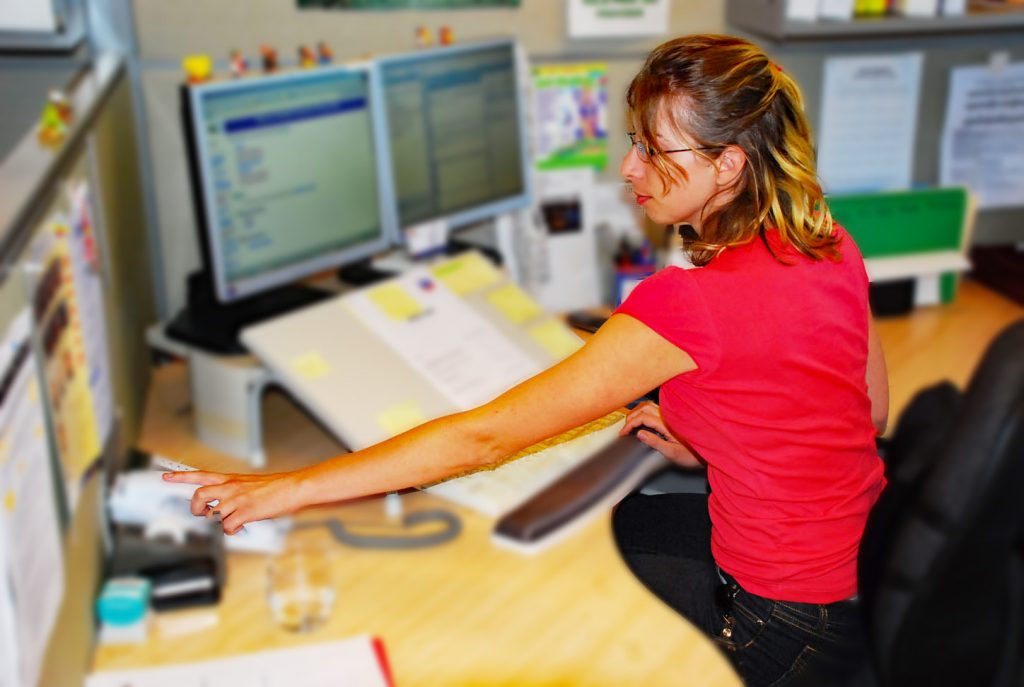I was terrified to go to university. Having nobody in the immediate family who’d been before, there was no reference for me. So my 17-year-old imagination ran away with itself as I pictured lectures with a cranky professor filling a giant blackboard with incomprehensible hieroglyphics and me not having a clue. The anxiety lasted until my first anatomy lecture when professor Tim Ackland, in his relaxed manner, casually laid out just how brilliant the design of the human body really is. It started a life-long fascination for me in the endlessly complex elegance of how we are arranged.
And there is no better expression of that genius than in looking at the vertebral column and its natural shape. I always say in Strong Spine seminars ‘keep your back straight and bend your knees’ isn’t bad advice, it’s just bad coaching. But it’s kind-of bad advice too, because the spine is strongest when it’s curved in an ‘S’ shape, not straight. Actually, when it’s straight, particularly in the lumbar curve, it usually means that there’s something very wrong. Ok, so skip the next paragraph if you want to avoid the potentially boring anatomy bit.
 These curves give the spine tremendous inherent strength because each vertebral body, being slightly wedge-shaped, acts like a block in a roman arch, creating a static equilibrium, supporting a structure that could hold considerable load, even without external support. But this strength isn’t just because of the shape of the bones. When we hold the spine in what’s also called ‘neutral position’, the joints at the back of the spine, the zygapophysial joints, are also in their mid-range, which allows the muscles acting on them to have the most strength. Also in the discs that sit between blocks of our human roman arch like skateboard-truck bushings; their hard, rubbery nucleus is held in the center, where it provides the most powerful support. You only have to look at some of the loads carted around in parts of the world where mechanical assistance isn’t available, to see how amazingly strong the spine is.
These curves give the spine tremendous inherent strength because each vertebral body, being slightly wedge-shaped, acts like a block in a roman arch, creating a static equilibrium, supporting a structure that could hold considerable load, even without external support. But this strength isn’t just because of the shape of the bones. When we hold the spine in what’s also called ‘neutral position’, the joints at the back of the spine, the zygapophysial joints, are also in their mid-range, which allows the muscles acting on them to have the most strength. Also in the discs that sit between blocks of our human roman arch like skateboard-truck bushings; their hard, rubbery nucleus is held in the center, where it provides the most powerful support. You only have to look at some of the loads carted around in parts of the world where mechanical assistance isn’t available, to see how amazingly strong the spine is.
If you stood the human spine and its deep support muscles on their own, they would naturally take on that ‘S’ shape. It’s the shape that the spine wants to adopt. Which brings us to the most common question I hear in Strong Spine seminars
‘If sitting like this is so good for me then why does it feel so weird?’ Why does good posture seem to take effort, when we know it’s the most mechanically and physiologically efficient shape.
The problem starts with the human being that surrounds the spine and our tendency to form habits. The muscles that we have voluntary control over, are very obedient servants. They and the part of the nervous system that drives them are constantly reading how we are using them and then trying to relieve us of the job of controlling that movement consciously. That means we don’t have to spend all day thinking about how we move so we’ve got more time to watch the Kardasians or whatever. Constantly hold them short? They respond with ‘ok I’m a short muscle now’ and resist returning to their usual length. Constantly hold them tight, and they’ll stay tight, even when you sleep, and gradually lose their memory of what it was like to be fully at rest. Don’t use a muscle? Then it’ll relax and switch off, which is what happens to some of the stabilizer muscles close to the spine.
We call the main muscles held short, the big three. Hamstrings, hip flexors and biceps have a few things in common: they cross multiple joints, they are held at a shortened length in the sitting position and they can pull us down, out of good posture, as a result.
In all strong spine seminars, including a dedicated one with the same name as this articles’ title, most people are amazed to find, after they’ve been taught how to gently stretch the big three, engage the stabilizers to switch them back on and release others that are chronically tight – that good posture, the neutral ‘S’ shape of the spine, not only feels natural, but it feels weird to sit, stand or move any other way.
Still skeptical? Try this simple test. Sit in what you know to be good posture. Weight on the sitting bones, lumbar spine curved in, chest lifted up, shoulders relaxed down and back and neck long. How natural does this feel?
Now try the exercise below, which is one of the best ‘all-in-one’ exercises that you can do.
Now try the sitting posture again. How natural does it feel now? See? Poor posture is not laziness.



